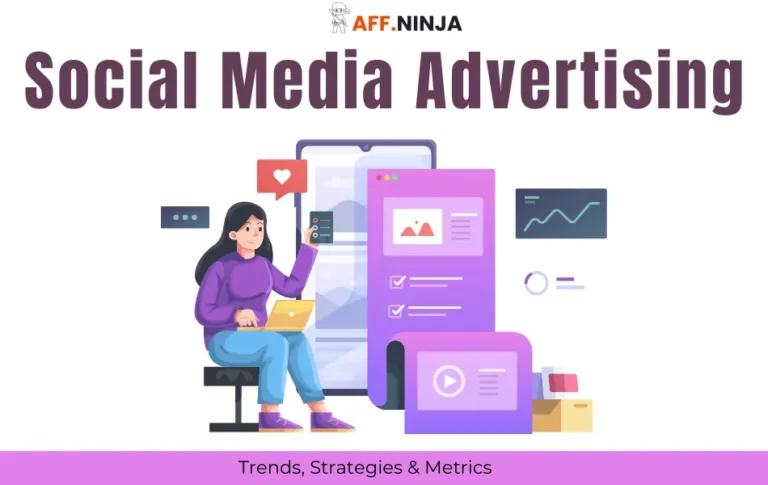Imagine you've just launched an ad campaign, and you're eager to see how it's performing. Are your ads reaching the right audience? Are they driving the desired actions?
Well, how would you know that? Thankfully, this is what ad campaign reporting is for. You can get along with a good analysis of how your ad campaigns are performing, all with the help of certain important parameters.
It's not just about numbers; it's about understanding the story behind those numbers.
But why it's crucial for marketers, and how you can use it to optimize your campaigns?
Well, let's find out!
Ad campaign reporting is the process of collecting, analyzing, and presenting data on the performance and outcomes of advertising campaigns. It involves tracking key metrics like impressions, clicks, conversions, and return on ad spend (ROAS) to evaluate the effectiveness of marketing efforts across various channels and platforms.
Impact of Ad Campaign Reporting On Marketers
Even though the impact of campaign reporting is not limited to what I have listed below, you can look forward to some of the most important ones here:
Cracking the Code of Ad Campaign Reporting
Let's first start with the campaign overview, consisting of what should be considered and what is needed!
Campaign Overview
The process of overviewing some of the campaigns can help you in a lot of ways, this includes the process of going through Goals and objectives, followed by analyzing your target audience, and campaign duration.
1. Goals and Objectives
Setting clear goals and objectives is the cornerstone of any successful ad campaign. Goals define what you aim to achieve, such as increasing brand awareness, driving website traffic, or boosting sales.
Objectives, on the other hand, are specific, measurable actions that help you reach those goals. For instance, if your goal is to increase sales, an objective might be to achieve a 15% increase in online purchases within three months.
2. Target Audience
Identifying your target audience is crucial for the success of your ad campaign. A target audience is a specific group of consumers characterized by demographics, interests, and behaviors that are most likely to respond positively to your ads.
Understanding your target audience helps tailor your messaging and creative elements to resonate with them. For example, if your product is a fitness app, your target audience might include health-conscious individuals aged 18-35 who are interested in fitness and wellness.
3. Campaign Duration
The duration of your ad campaign can significantly impact its effectiveness. While there is no one-size-fits-all answer, the duration should align with your campaign goals and budget.
For instance, paid search campaigns often run continuously to capture ongoing search traffic, while paid social campaigns might run for 12-16 weeks to build momentum and gather insights. It's essential to allow enough time for the campaign to optimize and for algorithms to learn which strategies work best.
Regularly reviewing performance data can help determine if adjustments are needed to extend or shorten the campaign duration.
Video advertising can increase conversion rates by up to 86%. Whereas, Display ads can increase the likelihood of conversion by 59% for consumers who search after seeing a display ad.
👉 Checkout more such interest stats in our article on Digital Marketing Statistics
Paid Ads: The Lowdown
Paid ads are the bread and butter of online marketing. They come in all shapes and sizes, and here are the main types:
- Search Engine Marketing (SEM): Ads that pop up when you search on Google or Bing (search engine marketing).
- Display Advertising: Those banner ads you see on websites.
- Social Media Advertising: Ads on Facebook, Instagram, Twitter, etc.
- Native Advertising: Ads that blend in with the content, like sneaky ninjas.
- Video Advertising: Ads that roll before, during, or after videos.
- Mobile Advertising: Ads made for your phone (mobile advertising).
Here’s a quick look at the different types of paid ads:
| Ad Type | Platform | Example |
|---|---|---|
| SEM | Google, Bing | Sponsored search results |
| Display | Websites | Banner ads |
| Social Media | Facebook, Instagram | Sponsored posts |
| Native | Blogs, News Sites | In-article ads |
| Video | YouTube, Vimeo | Pre-roll ads |
| Mobile | Apps, Mobile Sites | In-app ads |
Each ad type has its perks and quirks, so picking the right one depends on what you’re aiming for and who you’re trying to reach. For tips on making your ad campaigns sing, check out our ad campaign optimization.
Grasping the basics of paid ads sets you up for success in ad campaign reporting. By choosing the right strategies and platforms, you can hit your targets and make your advertising dollars work harder.

Free Ad Campaign Analysis
Semrush offers powerful tools for comprehensive ad campaign analysis. Its Advertising Research feature allows marketers to uncover competitors' strategies, analyze keyword performance, and track ad spend. With detailed insights into ad copy, landing pages, and historical data, Semrush empowers businesses to optimize their campaigns for better ROI.
Performance Metrics
While running an ad campaign and analyzing it is the key to success in ad campaign success, let's take a look at some of the important aspects that are worth considering. Let's take a look at these performance metrics.
1. Impressions
Impressions refer to the number of times your ad is displayed, regardless of whether it is clicked. This metric is crucial for measuring the reach of your campaign and brand visibility. High impressions indicate that your ad is being shown frequently, which can help increase brand awareness. However, impressions alone do not guarantee engagement or conversions, so they should be analyzed in conjunction with other metrics.
2. Clicks
Clicks measure the number of times users interact with your ad by clicking on it. This metric is a direct indicator of user interest and engagement. A high number of clicks suggests that your ad is compelling and relevant to your audience. Tracking clicks helps you understand which ads and creatives are performing well and driving traffic to your website or landing page.
3. Click-Through Rate (CTR)
Click-through rate (CTR) is the ratio of clicks to impressions, expressed as a percentage. It is calculated using the formula:
CTR = (Clicks/Impression) × 100
A high CTR indicates that your ad is relevant and engaging to the audience. It helps assess the effectiveness of your ad copy, visuals, and targeting. Improving CTR can lead to better ad performance and lower costs per click.
4. Conversions
Conversions are the actions you want users to take after clicking your ad, such as making a purchase, signing up for a newsletter, or filling out a form. This metric is critical for measuring the success of your campaign in achieving its objectives. Tracking conversions helps you understand the return on investment (ROI) and the effectiveness of your ad in driving desired actions.
5. Conversion Rate
Conversion rate is the percentage of clicks that result in a conversion. It is calculated using the formula:
Conversion Rate= (Conversions/Click)×100
A high conversion rate indicates that your landing page and overall user experience are effective in persuading users to take action. Optimizing conversion rates involves improving landing page design, call-to-action (CTA), and user journey.
6. Cost Per Click (CPC)
Cost per click (CPC) is the amount you pay for each click on your ad. It is a key metric for managing your ad budget and measuring cost efficiency. Lower CPCs can help you get more clicks within your budget, while higher CPCs might indicate high competition for keywords or audience segments. Monitoring CPC helps you optimize bidding strategies and improve ad performance.
7. Cost Per Acquisition (CPA)
Cost per acquisition (CPA) measures the cost of acquiring a customer or lead through your ad campaign. It is calculated by dividing the total campaign cost by the number of conversions. CPA is crucial for understanding the financial efficiency of your campaign. Lower CPA means you are acquiring customers at a lower cost, which is beneficial for maximizing ROI.
8. Return on Ad Spend (ROAS)
Return on ad spend (ROAS) measures the revenue generated for every dollar spent on advertising. It is calculated using the formula:
ROAS=Revenue From Ads/Cost
A high ROAS indicates that your ad campaign is generating significant revenue compared to its cost. This metric helps you assess the overall profitability of your campaign and make informed decisions about budget allocation.
Just tracking metrics isn’t enough; you’ve got to dig into the data to find those golden nuggets of insight. Good data analysis helps you spot trends, understand your audience, and fine-tune your ad strategies.
- Spot Trends: Look for patterns to see which ads are killing it and which ones are flopping. This can guide your future media buying strategies.
- Know Your Audience: Get into demographic and psychographic data to get a better grip on what your audience likes. Tailor your ads to match their preferences.
- Optimize Your Ads: Use the insights to make smart choices about where to place your ads, who to target, and what creative elements to use. This can boost your ad campaign optimization.
For instance, if you find that video ads are getting more love than display ads, you might want to throw more budget at video advertising in your next campaign.
For more tips on making your campaigns shine, check out our guide on ad campaign optimization.
How to Nail Your Ad Campaign Reporting?
Effective ad campaign reporting is crucial for optimizing performance and demonstrating ROI. Clearly define your campaign objectives and key performance indicators (KPIs) to nail your reporting. Focus on metrics that directly align with these goals, such as conversions, click-through rates, or cost per acquisition.
Organize your data in a logical, easy-to-understand format using visuals like charts and graphs where appropriate. Provide context by comparing current performance to historical data or industry benchmarks. Don't just present numbers – offer insights and actionable recommendations based on the data.
Tailor your reports to your audience, whether it's executives, clients, or team members. Highlight the most relevant information for each group. Automate your reporting process where possible to save time and ensure consistency.
Finally, regularly review and refine your reporting approach. Solicit feedback from stakeholders and be prepared to adjust your reports to better meet their needs. By following these practices, you'll create compelling, insightful campaign reports that drive results.
Seeing the data is one thing, but understanding it is where the magic happens. Good interpretation techniques help you pull out the juicy insights from your reports.
Here are some must-know techniques:
- Trend Analysis: Spotting patterns over time to guess what’s coming next.
- Comparative Analysis: Measuring current numbers against past ones or benchmarks to see how you’re doing.
- Correlation Analysis: Looking at how different things are linked to figure out cause and effect.
For more tips on leveling up your reporting game, check out our articles on ad performance metrics and ad campaign optimization. By getting good at showing and understanding your data, you can make smarter decisions and boost your campaign performance.
Ad Campaign Reporting Platforms You Might Wanna Check
Effective ad campaign reporting is crucial for optimizing performance and demonstrating ROI. Several platforms offer robust features to streamline this process. Here are some top options to consider:
| Platform | Key Features |
|---|---|
| Whatagraph | 40+ data sources, 100+ report templates, white-label options |
| AgencyAnalytics | 70+ integrations, automated reporting, custom dashboards |
| DashThis | 34+ marketing channel integrations, drag-and-drop interface |
| Databox | 200+ pre-built templates, goal tracking, and data alerts |
| Funnel | 500+ data source connectors, data cleansing, custom metrics |
These platforms offer various capabilities, from data aggregation and visualization to automated reporting and customization options. When choosing a platform, consider factors such as the number of integrations, ease of use, customization options, and pricing to find the best fit for your agency's needs. Many offer free trials, allowing you to test their features before committing.
Common Queries Related to Ad Campaign Reporting
Why is Ad Campaign Reporting Important?
Ad campaign reporting is crucial for tracking performance, demonstrating ROI, and making data-driven decisions to optimize future campaigns. It helps identify what's working and what needs improvement.
How Often Should I Create Ad Campaign Reports?
The frequency depends on your campaign duration and goals. Generally, weekly or bi-weekly reports for ongoing campaigns and a comprehensive report at the end of each campaign are recommended.
What Key Metrics Should I Include in My Ad Campaign Reports?
Include metrics that align with your campaign objectives, such as impressions, clicks, click-through rate (CTR), conversions, cost per click (CPC), and return on ad spend (ROAS).
Should I Include Competitor Data in My Ad Campaign Reports?
Yes, when available. Competitor data provides context and benchmarks for your performance. Include metrics like share of voice and comparative ad spend if possible.
What Should I Do If My Ad Campaign Performance Doesn't Meet Expectations?
Analyze the data to identify underperforming areas. Suggest A/B testing, audience refinement, or creative optimizations. Present a plan of action to improve results in the next campaign phase.
Throttle Up Your Ad Campaigns
Mastering ad campaign reporting isn't just about crunching numbers – it's about telling a compelling story with your data. Remember, your reports are your chance to shine and show off the awesome results you've achieved.
From my perspective, I would recommend using those snazzy visuals and highlighting your wins. And hey, even if things didn't go quite as planned, use it as an opportunity to showcase your problem-solving skills. The key is to keep learning, keep refining, and keep pushing for better results.
As a closing line, I would recommend trying out the strategies mentioned above and implementing them, you never know which strategy would help you out.







